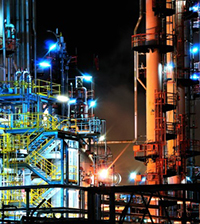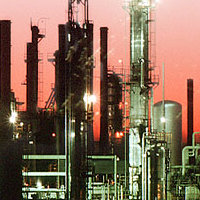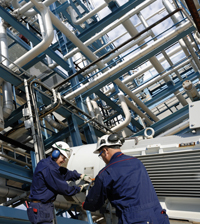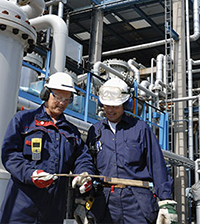
The Importance of Leadership in Process Safety Management
August 4, 2014
|
Tip of the Month
The first pillar of Risk Based Process Safety Management is “Commitment to Process Safety.” A formalized mentoring system can ensure workforce involvement, compliance with company and regulatory requirements, increase the competency of personnel and enhance the process safety culture of the entire organization. Within this element there are sever...
View Article

Gas Sweetening-Part 1: Comparison of Amines
July 11, 2014
|
Tip of the Month
Several alkanolamines have been used for acid gas removal from natural gas streams. In this study only a primary monoethanolamine (MEA), a secondary diethanolamine (DEA) and a tertiary methydeithanolamine (MDEA) are considered. MEA has the highest reactivity and MDEA has the highest selectivity.
In this TOTM, we will study and compare the performa...
View Article

Simple Equations to Approximate Changes to the Properties of Crude Oil with Changing Temperature
April 22, 2014
|
Tip of the Month
This article describes simple equations to approximate changes to the properties of crude oil with changing temperature. Changes in crude oil density and specific heat, or heat capacity, can be estimated from graphs and/or more elaborate computer simulation. The latter generally requires access to a process simulator and characterization data fo...
View Article

Acid Gas-Water Content
February 11, 2014
|
Tip of the Month
This post goes over the acid gas-water phase behavior system. Specifically, different methods of predicting water content of acid gas systems are evaluated based on experimental data from the literature. Water content diagrams compatible with the experimental data for pure CO2, Pure H2S, pure CH4 and their mixtures are generated and presented. Thes...
View Article

Estimating TEG Vaporization Losses in TEG Dehydration Unit
December 16, 2013
|
Tip of the Month
In this Tip of The Month (TOTM), the effect of striping gas rate and triethylene glycol (TEG) circulation ratio on the TEG vaporization loss from the regenerator top and contactor top is investigated. Specifically, this study focuses on the variation of TEG vaporization losses with reboiler pressure, TEG circulation ratio and stripping gas rat...
View Article

Estimating Still Column Top Temperature in TEG Dehydration Unit
November 7, 2013
|
Tip of the Month
In this Tip of The Month (TOTM), the effect of striping gas rate and TEG circulation ratio on the still column top temperature for regeneration of rich triethylene glycol (TEG) is investigated. Specifically, this study focuses on the variation of still column top temperature with reboiler pressure, TEG circulation ratio and stripping gas rate. By p...
View Article







